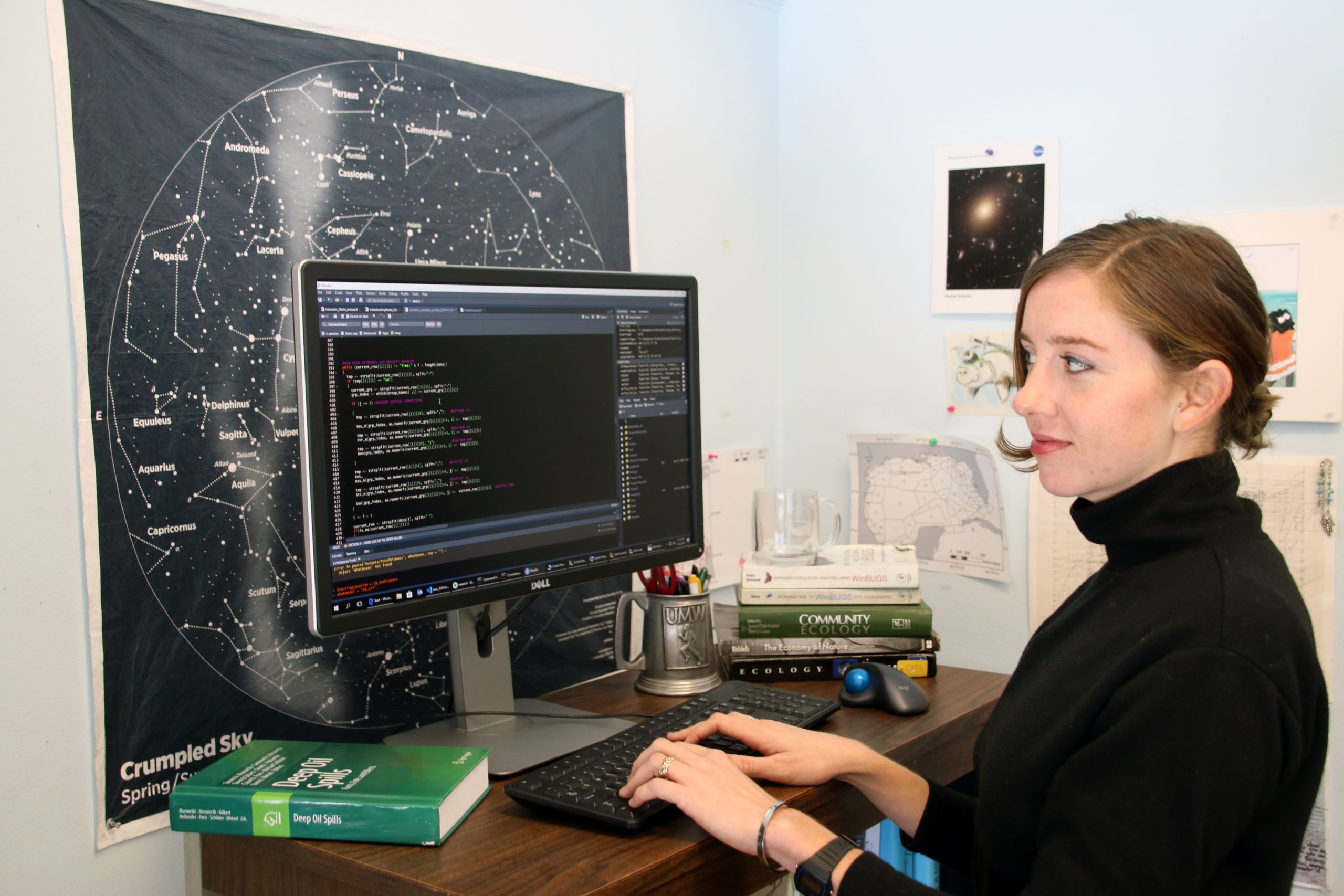Student Blogs & Vignettes
Beitris Hintze

Beitris Hintze, USF CMS Student
About my research
I am a PhD student in Dr. Cameron Ainsworth’s Fisheries and Ecosystem group. To me, models are at the crux of science and communication. With modeling we can take something as incredibly complex as an ecosystem and break it down into accessible mathematical chunks to get a better understanding of how every piece interacts. I am currently working with the end-to-end ecosystem model, Atlantis-Gulf of Mexico, to evaluate seagrass coverage under different possible scenarios of toxic and non-toxic algal blooms. Harmful algal blooms (HABs) occur when algae — simple aquatic photosynthetic organisms — grow out of control while producing toxins or depleting oxygen, impacting everything from the primary producers to top predators, including us. They are a natural phenomenon turned unnatural as excess nutrients from industrial activity increasingly runoff into our waterways. We want to understand how these blooms impact the West Florida Shelf ecosystem, specifically endangered and threatened species, and if seagrass restoration – a popular and effective conservation tactic – balances out the effects. The complex interactions between ecosystem members are challenging to understand with traditional sampling and monitoring, but in modeling, it is possible to understand the interplay of these processes, quantify the benefits of seagrass restoration, and make progress towards a goal of rehabilitating critical habitat. Now more than ever we must work to bridge the gap between research, policy and public understanding.
Why USF CMS?
I visited St. Petersburg randomly on a spring break trip in 2011 and was drawn in by the art community and miles of public waterfront. Immediately after graduation I moved from Virginia for an internship at the Florida Fish and Wildlife Research Institute (FWRI) which morphed into 4 years of research work monitoring manatee and sea turtle populations. I earned a master’s degree through CMS thanks to a SeaGrant with FWRI, my job was to estimate the probability of lethal injury to manatees given characteristics of collision events. I also spent time working at U.S. Geological Survey in the coastal monitoring group doing more predictive modeling. Although a lot of my experience is in endangered and threatened species conservation, I was always most interested in looking at these species in the context of their ecosystems. At CMS I learned that a major challenge in recovering species is determining the benefits of habitat restoration in light of increasing environmental stressors, taking into account multi-species interactions. After taking Dr. Ainsworth’s class on ecosystem modeling, I was hooked on models as an incredible tool for conservation decision making. Collaboration with other science institutions around CMS was imperative to my growth as a researcher, and led to joining my dream niche! Each of these opportunities was made better by the network of people we have access to here – science is all about relationships and learning from each other. St. Pete and this innovative community has seamlessly become my home port. I am passionate about giving back where I can, particularly as it pertains to communicating science, informing policy, and preserving public access to the environments here.